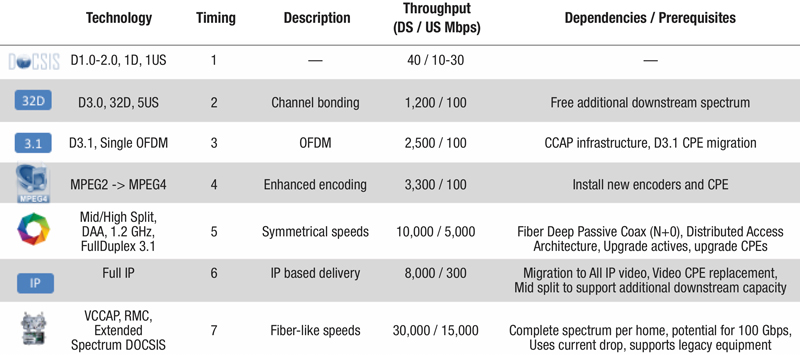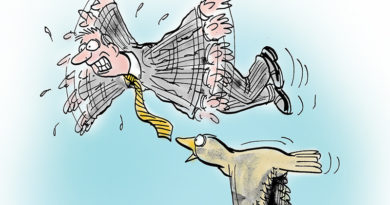Would You Like Fries With That?
By Jeff Finkelstein
Like many of my and later generations, I spent time working in a fast food restaurant as a way to make money while in college. Having gone to college at 16 years old my work choices were limited by: the distance to where my dorm was located as I did not have a car and took public transit; flexible hours to let me work at different times every week based on when assignments were due and musical gigs I had lined up; and finding a hiring manager willing to hire a goofy 16-year-old.
Like many of my and later generations, I spent time working in a fast food restaurant as a way to make money while in college. Having gone to college at 16 years old my work choices were limited by: the distance to where my dorm was located as I did not have a car and took public transit; flexible hours to let me work at different times every week based on when assignments were due and musical gigs I had lined up; and finding a hiring manager willing to hire a goofy 16-year-old.
I found a job at a local McDonald’s. It started with cleaning tables and bathrooms, then I got moved up in the pecking order and pay scale working behind the cash register. I never had to make the food as at the time it was considered a specialized skill being a much more manual process than today. Plus, the managers liked my sense of humor with the customers, keeping things light during the lunch and dinner rush.
There are important life lessons that teenagers can learn while working in fast food restaurants, if they are willing. Here are the lessons I took away from the experience.
- Multi-tasking — You need to learn how to do multiple tasks simultaneously. Taking orders, communicating them to those preparing food, getting payments and giving exact change, putting orders together, dealing with incorrect orders, cleaning, all happen at once. This is a skill that stays with you for life and helps reduce stress when in the workforce.
- Skirmishes vs wars — Learning to pick your battles is a key skill many of us need to learn as a life lesson. If you react to everything you may take as a slight against you, your stress level will go up and add to the collective zeitgeist in the restaurant. Keeping your sense of humor and a sense of calm during stressful times increases your value as a team member.
- Not wearing your emotions on your sleeves — Too many of us show everything on our face and through body language. When customers are yelling at you, a poker face is an important skill to have. Never let them know they are getting to you.
- Group etiquette — As part of the restaurant team you have to do different jobs. Knowing that your team members will pitch in to help develops a sense of camaraderie. When someone gets your back whether by helping move boxes, covers for you so you can take a break, or helps with a difficult customer, it shows you are part of something larger than yourself.
- There is more to life — Working in a stressful fast food environment is not for everyone. It can help you decide what is important in your life. College, travel, having some nicer things in life, all are available to those willing to work for it. Fast food is a stepping stone for some, while for others it is an end to a means.
I know a few folks who have built their career on fast food. One person I worked with ended up going to school for business and eventually earned an MBA. He now owns a dozen restaurants and hires students regularly as a way for them to learn and earn. It is a demanding job that is not for everyone, but the life skills that can be learned in the fast food industry are important no matter what field in which you end up building a career.
You will never know where these life lessons will come from until after the fact. Being inflexible at work or at home does not build a team.
You cannot tell which direction the train went by looking at the track.
One of my rules related to defining roadmaps is as follows:
“Use technologies as long as it makes sense, but no longer.”
Similar to fast food work, things in our industry change rapidly. While we are working on testing and deploying the most recent technologies throughout our networks, a core group of individuals at CableLabs, including vendors and operators, is working on the next generation of cable technology. It is easy to get distracted and develop a bad case of analysis paralysis. We need to keep in mind that deploying products to tens of millions of customers takes time; those products will be in our networks for quite a few years. Waiting for the next great thing with promises of increased capabilities can impact our ability to improve performance with the incremental changes available to us today.
Going back to my roadmap from earlier articles, I put forth an example of the rungs in the technology ladder moving from DOCSIS 1.0 to future technologies, with minimized spending of the same dollar more than once (regrettable vs non-regrettable spends).
Each step in the roadmap is designed to build on previous ones.
Steps 1-3
Are all about getting as much capacity as possible out of available spectrum using incremental technology changes.
I use the work “incremental” with care, because DOCSIS 3.1 is a significantly different technologically from DOCSIS 3.0, introducing OFDM, more powerful error correction, and higher modulation orders. Given the backwards compatibility built into DOCSIS 3.1, I believe it is fair to consider it incremental to DOCSIS 3.0. I expect DOCSIS 4.0 (or whatever designation the next version is assigned) to be as much a quantum leap from DOCSIS 3.1 as DOCSIS 3.1 was to DOCSIS 3.0. We have been working on the next generation of DOCSIS for a few years now, but like DOCSIS 3.1 from ideation to execution it may take up to 10 years. Stay tuned…
Steps 4-5
Are all about spectrum.
For any future technology to be used, you must have spectrum for it to run in. Freeing that spectrum requires changes to how content is compressed, moving the split (sub to mid or high) and also changing the top end (750 MHz or 860 MHz to 1 GHz or 1.2 GHz) to get as much spectrum as possible. Following another rule of “Is the juice worth the squeezing,” these steps while complex and time consuming will prove to be worth the effort in the long run. Moving toward a distributed architecture as well allows reduction in amplifier cascades by placing the physical convergence layer closer to the customer, with or without the DOCSIS MAC scheduler co-existing in the same node enclosure. I also put full duplex (FDX) DOCSIS into this step as it allows reuse of spectrum for simultaneous transmission of upstream and downstream in the same resource blocks, effectively doubling the use of the full-duplex allocated spectrum.
Step 6
Is about simplification of delivery using TCP/IP.
Rather than continuing to maintain the previous generation of technologies for video delivery that used SCTE 55-1, SCTE 55-2, and DSG (DOCSIS Set-top Gateway) specs, moving to a unified IP-only delivery for both downstream and upstream transmissions has the potential to significantly reduce the inherent complexities of managing the cable network. It is not only about removing the modulators and demodulators used for television transmissions, it is about the entire ecosystem from provisioning to monitoring, service delivery to service assurance, flexible architectures allowing facility consolidation.
Step 7
Is the future that previous steps allow us to drive toward by executing each step in a logical sequence.
By performing each step, we have created more spectrum, reduced amplifier cascades for better outside plant performance, and simplified equipment focused on standards-based delivery using TCP/IP. We can now look towards optimizing the delivery architecture allowing for future changes by creating a flexible MAC and PHY where we may make decisions based on the bandwidth and business needs for each plant segment independent of other segments.
However, unlike the Rosetta Stone, the roadmap is not etched in granodiorite. As I mentioned in an earlier article, understanding the difference between a globe with a “you are here” sticker to a map showing major roads, to one showing side streets, to a GPS app showing your exact latitude and longitude, is important. For example, if in your specific circumstances executing step 6 (all IP) prior to steps 4-5 (spectrum), there is no reason for not doing so. Just do it with eyes wide open and recognize the spectrum tax that must be paid for having the same content delivered over the same plant in different formats.
Having a destination in mind is critical to minimizing the number of permutations in each step and reducing regrettable spend.
While planning out your route is an essential thought process, an equally important one is being flexible to change when things pop up that make it difficult, or even impossible, to execute the pre-planned strategy. Being able to continue down a path even with obstacles thrown in your way is critical, but being inflexible to change at each step in the path reduces or removes the opportunity to make better decisions as you move forward.
Just as trees that are rigid tend to get uprooted during a storm, the trees that bend will not only survive the elements but will be more resilient to future weather. The same is true of roadmaps. Guidance is not something that is neither infallible nor ineffable, it is just simply guidance.
As I work on roadmaps, I try to follow a few simple concepts.
- Stay grounded — Do not lose sight of our core values in that all technologies we use are for providing a better experience for our customers
- Connect with your roots — We are standing on the shoulders of giants that came before us and need to build on previous technologies whenever possible
- Turn over a new leaf — Don’t be afraid of adding new technologies into your toolset
- Bend before you break — Be strong in the directional guidance of the roadmap, but do not treat it as an absolute
- Enjoy your natural beauty — Each technology we deploy must have its own inherent strengths and weaknesses, use that technology as long as it makes sense to do so, but no longer
- Keep growing — Don’t get complacent about technologies, they are meant to be superseded by newer ones as business needs shift
We are fortunate be part of an industry that works so hard on self-improvement and is not afraid to innovate for the future. At the same time because of the scale of our networks it takes time to deploy new products, so it is an ever-changing technological balance we must maintain to manage with multiple layers of old, current and future technologies simultaneously.
To me, that is one of the most exciting parts of working in cable. Paradigm shifts like D3.0 to D3.1 to FDX DOCSIS are becoming the new way of thinking, while we also have to manage and maintain our existing infrastructure for our customers. This is one key reason why change management is so essential to the success of deploying new cable technologies and every day is exciting to work in our industry.
Enjoy your journey!

 Jeff Finkelstein
Jeff Finkelstein
Executive Director of Advanced Technology
Cox Communications
Jeff Finkelstein is the Executive Director of Advanced Technology at Cox Communications in Atlanta, Georgia. He has been a key contributor to the engineering organization at Cox since 2002, and led the team responsible for the deployment of DOCSIS® technologies, from DOCSIS 1.0 to DOCSIS 3.0. He was the initial innovator of advanced technologies including Proactive Network Maintenance, Active Queue Management and DOCSIS 3.1. His current responsibilities include defining the future cable network vision and teaching innovation at Cox.
Jeff has over 43 patents issued or pending. His hobbies include Irish Traditional Music and stand-up comedy.
Chart provided by author




